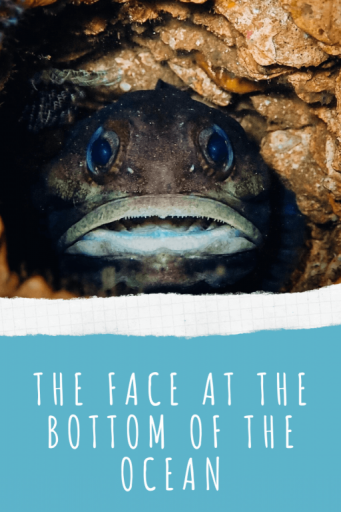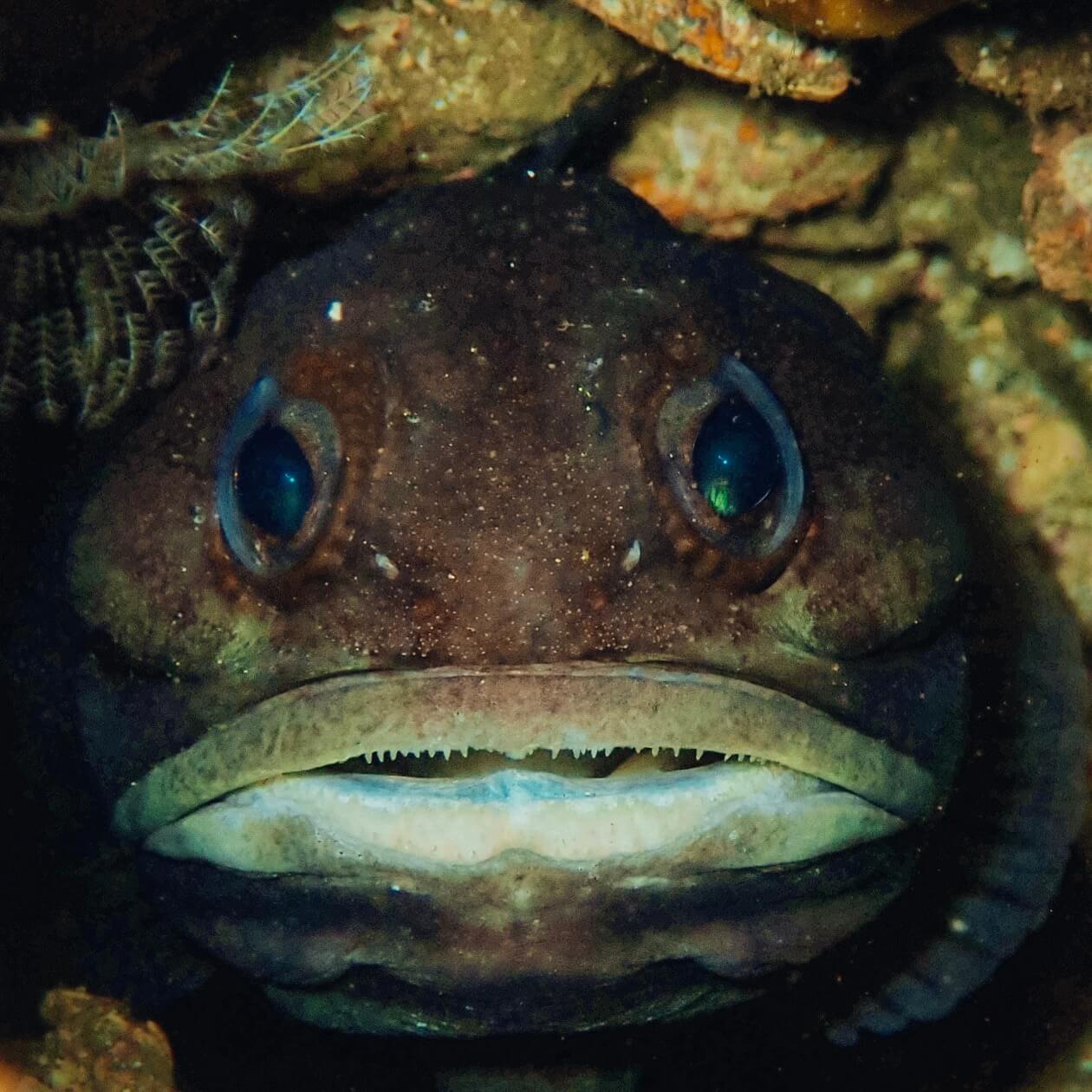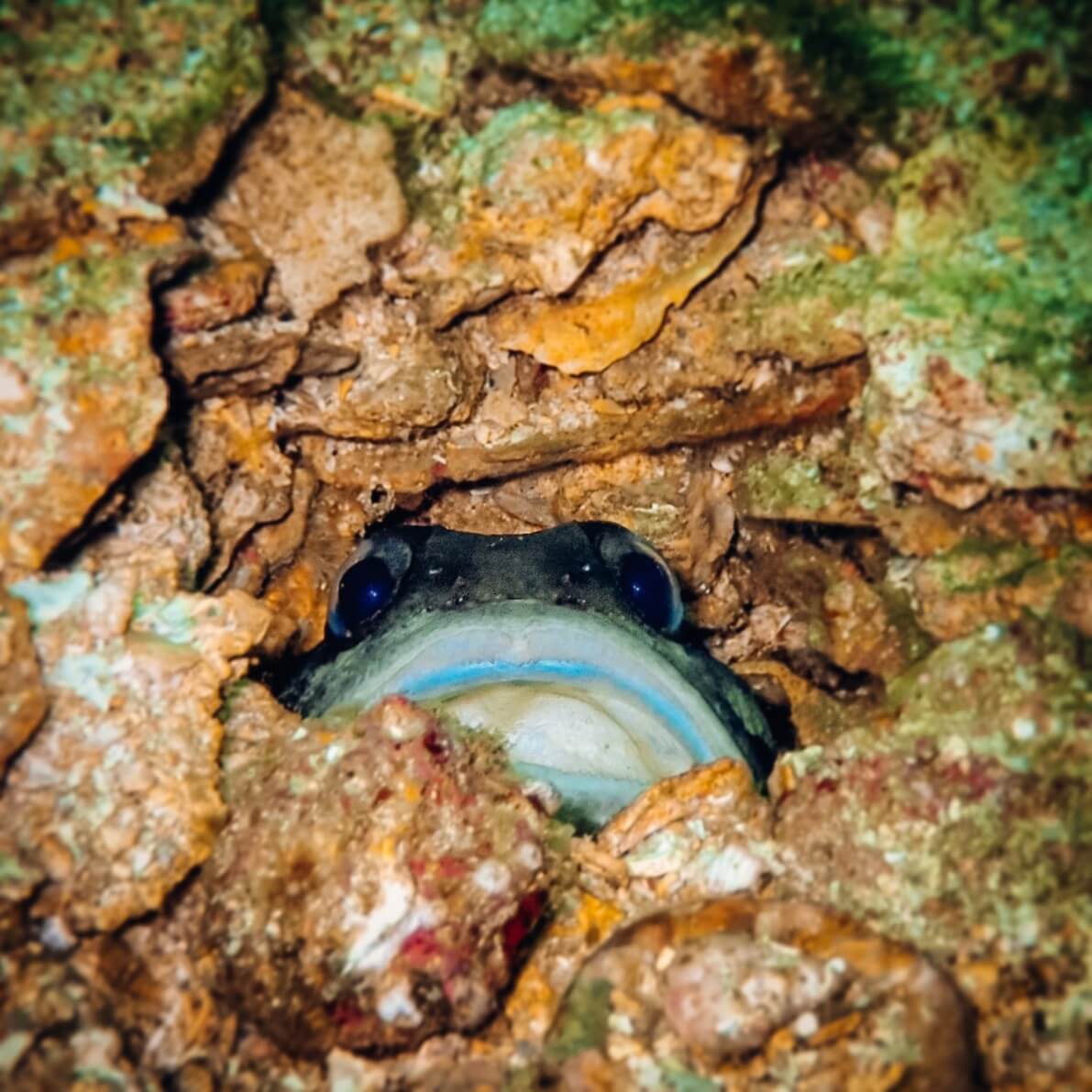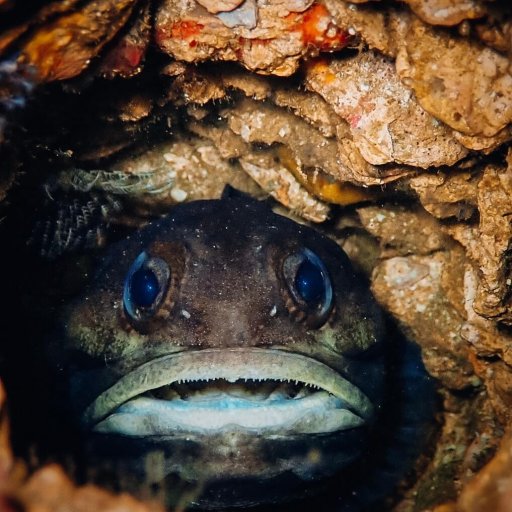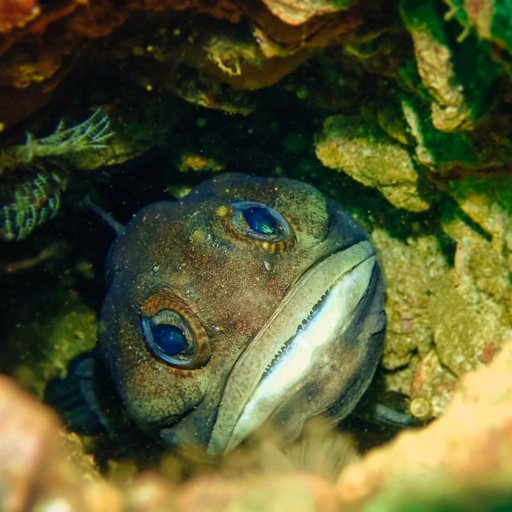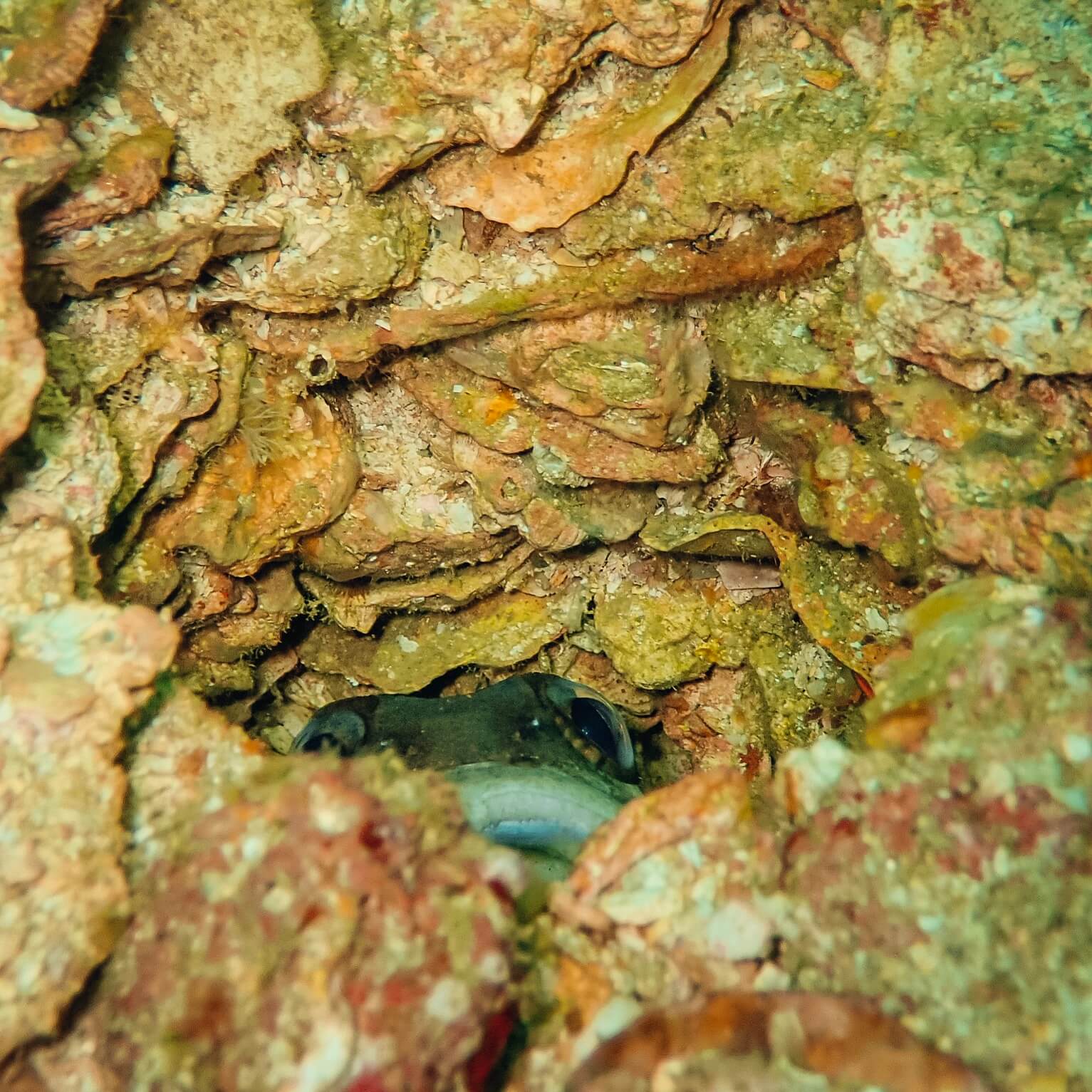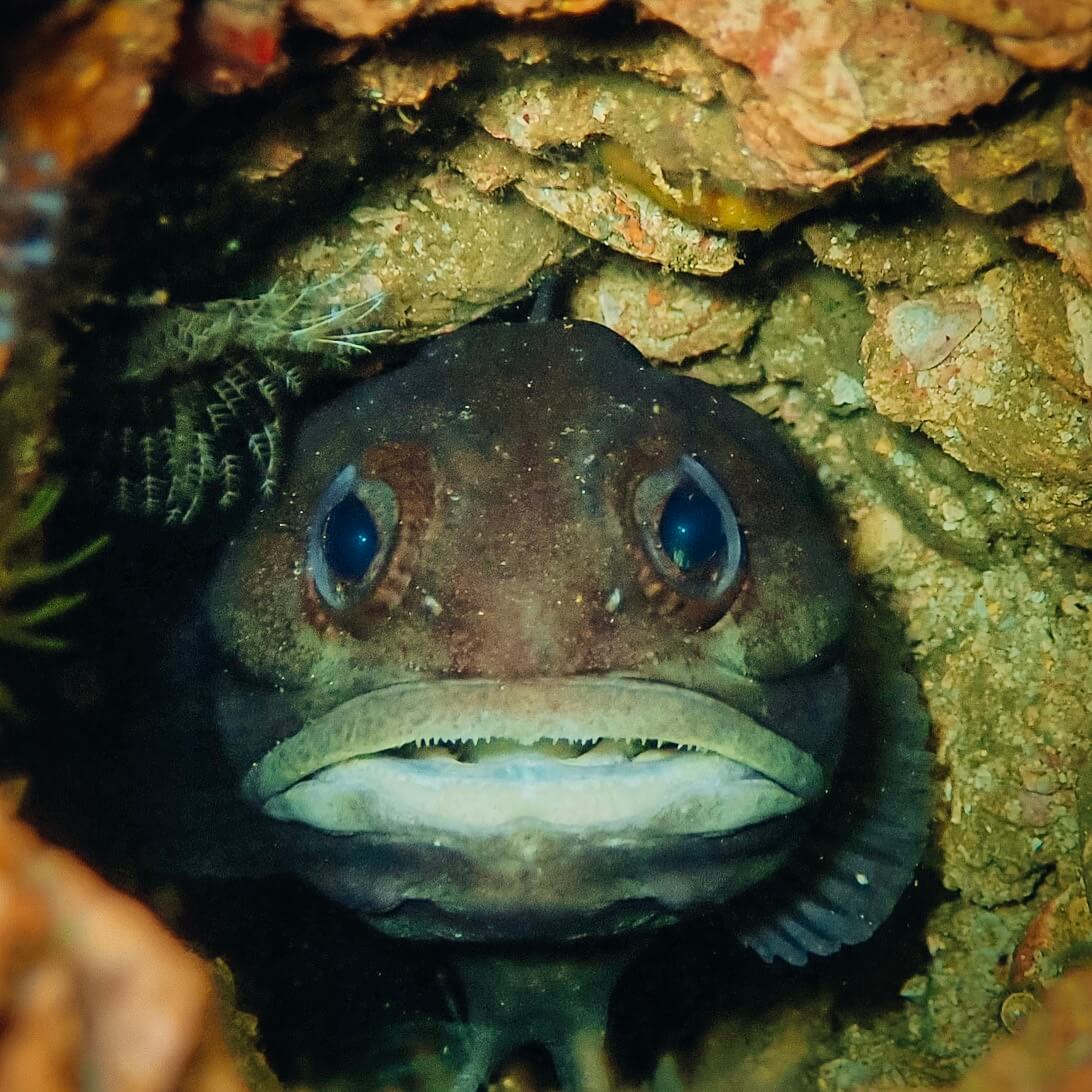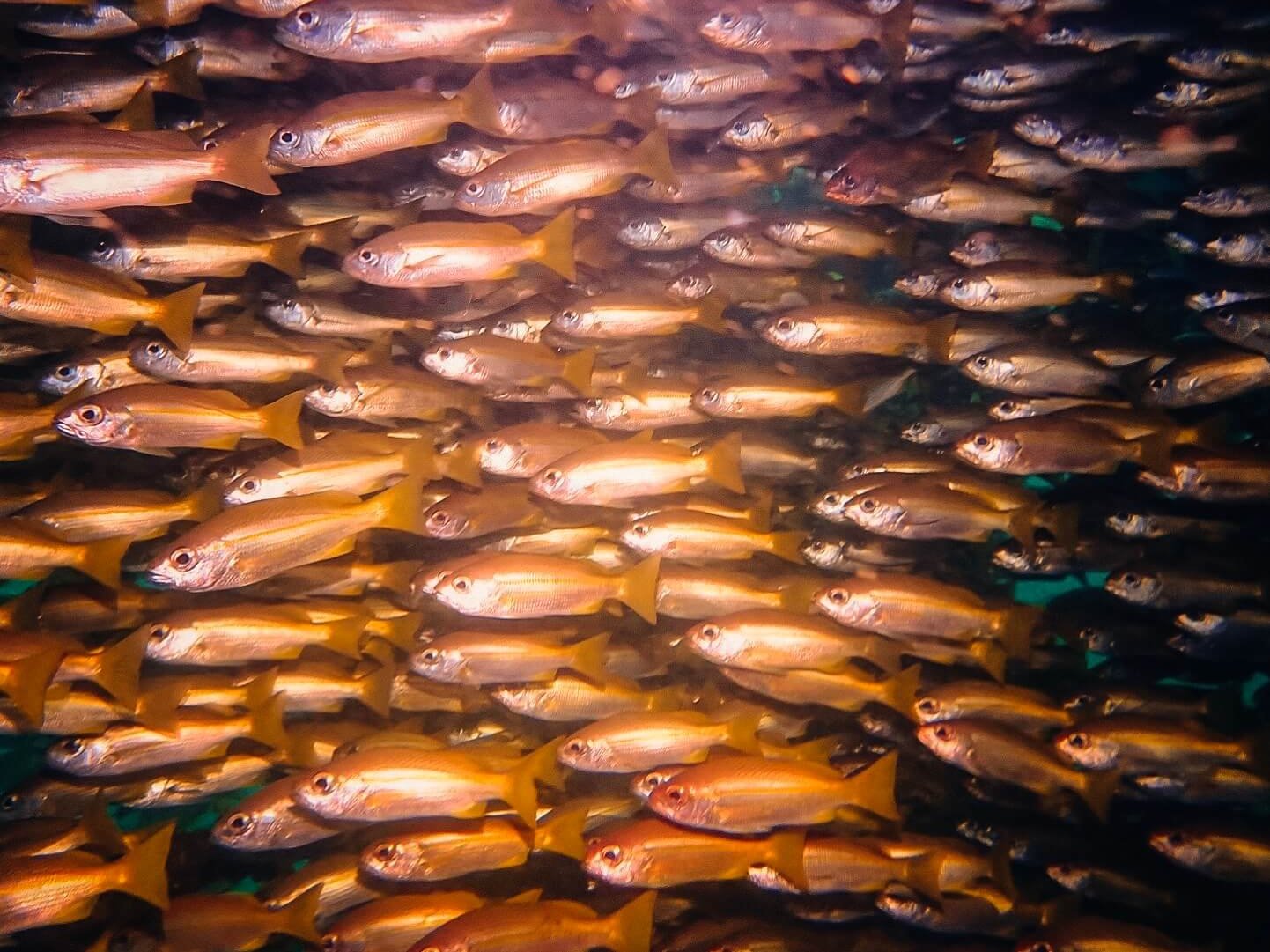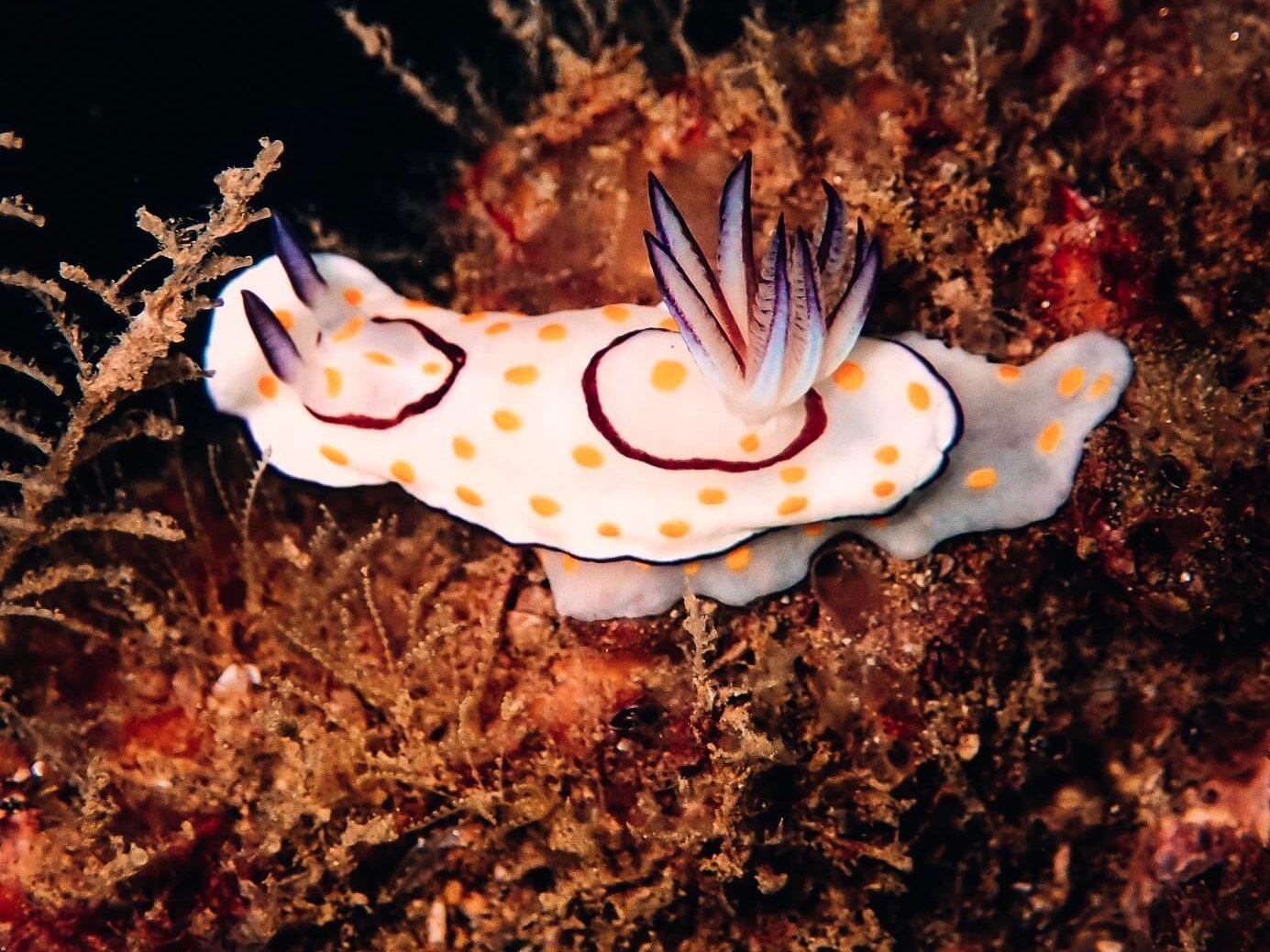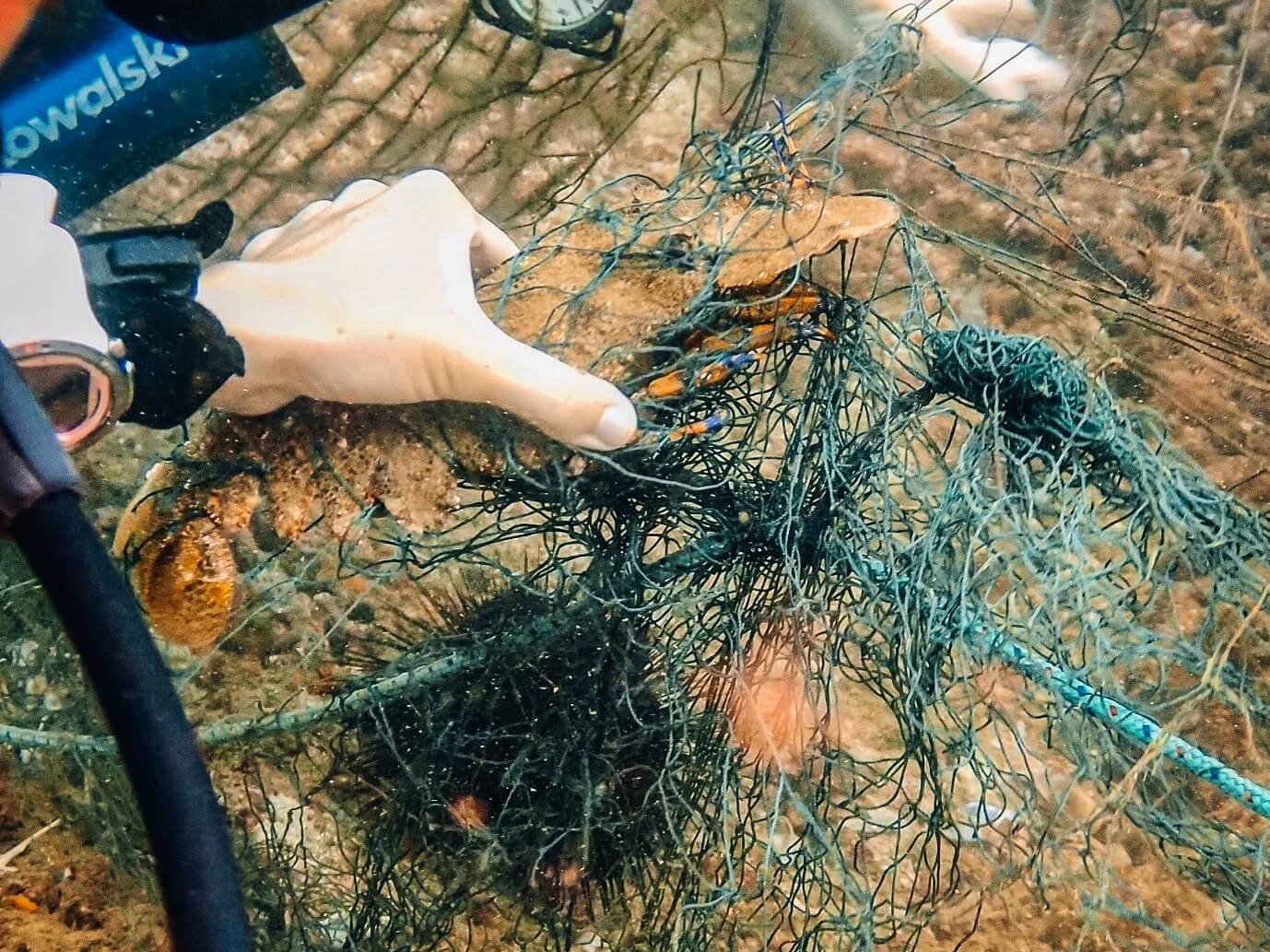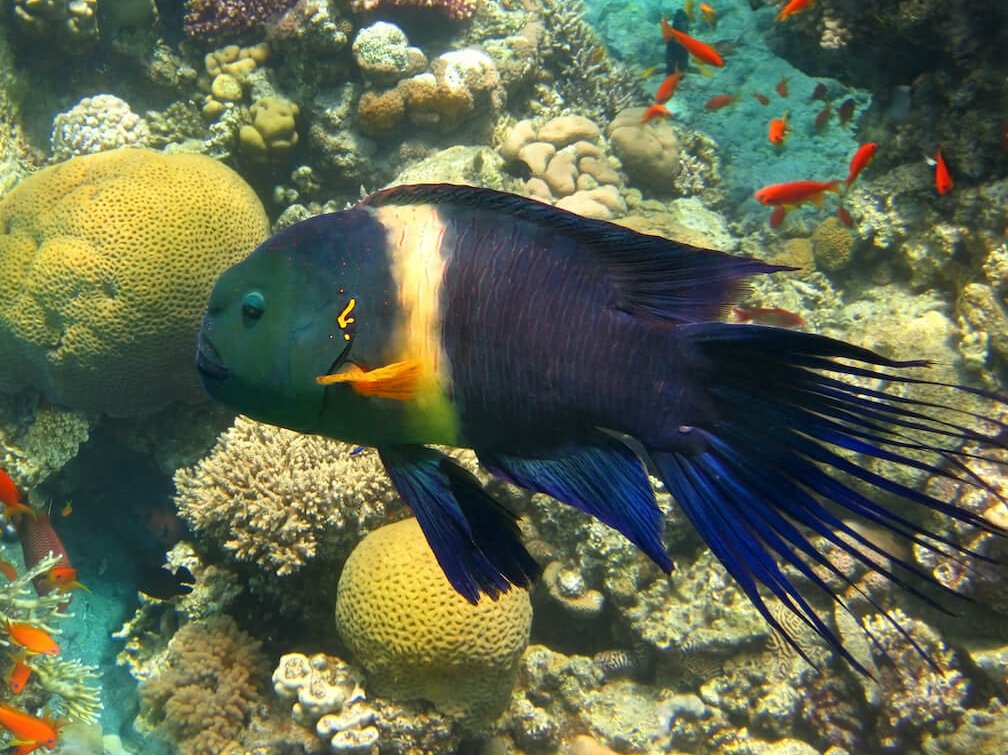30 meters of depth does funny things to your brain on scuba. It’s a bit like drinking alcohol. In fact, that’s what I tell my students, that each ten meters under the surface is the equivalent of downing one shot. I’ve seen students do some amusing things at 30 meters. A doctor once performed an impromptu dance and proceeded to burst into hysterical laughter. A Dutch boy, trying to navigate, kept swimming head first into the sand. Heck, even though I’m used to it, I still find myself struggling to operate my own BCD pocket zippers every now and again. The giant toad of a face staring up out of the sand at me was new though. Had I really just seen that? Or was the depth playing tricks on my brain?
In clear water, I was used to being able to admire the sea-life I was pointing out from afar, as I would back away to let my divers get a closer look. In Oman, the visibility was limited enough that usually only one person at a time could inspect whatever I was pointing at. I pointed at the wide-mouthed, toad creature, staring up out of the otherwise barren sandy floor, and instinctively kept swimming a little ways away to let everyone else get a closer look. Then I immediately realized that I had absolutely no idea what in the world I had just pointed at.
There wasn’t time to go back for a closer look now. At 30 meters breathing normal air, bottom time is limited, and I had 3 students to get through advanced course skills with. The toad face would have to wait until after, if I could even find it again. You would think that a face gazing up out of a burrow in the sand would be pretty obvious, but with this kind of visibility, the kind that my students had to stay so close that I was practically kicking them, it was difficult to find anything twice.
Luck was on our side though. The British family of students were all quick learners, and easily completed every task I threw at them with a few minutes to spare. We began our gradual ascent up the sloping, sandy bottom, and there he was again, that ugly, softball-sized face with that clownish frown extending from end to end. Everyone was eager for a second look, so I tried not to linger too long before moving out of the way. I stayed just long enough to notice his handmade well, a beautiful feat of architecture for a fish. I was pretty sure he was a fish. Each stone had been laid just so, to create a perfectly circular, walled burrow extending downwards into the unknown.
Of course my students’ first question after the dive was to ask what that creature had been. Even the son, the brainiac of the family who had an endless library of nature documentary facts memorized, was stumped. I admitted that I didn’t have a clue, but for some reason the name “jawfish” was ringing a bell. I immediately regretted saying that. Jawfishes were tiny little fish, sometimes confused with blennies except for their elongated mouths. What we had seen had been massive, comparatively speaking.
Back at the dive shop, I made a beeline for my favorite fish ID book. The guests always went for the hardback books with colorful glossy photos on the covers. Never judge a book by its cover though. Those books were all for the Red Sea on the other side of the Arabian Peninsula. The best book was a small spiral bound volume that was missing its cover, and looked like an old notebook that was falling apart at first glance. This one was specific to Oman though, and thus the most accurate.
I flipped through the pages, quickly scanning the photographs and sure enough, there was our toad face. It was indeed a species of jawfish, a Birdled jawfish (Opistognathus nigromarginatus) to be precise. As all divers love to do when they spot something cool and unusual, I proudly showed the page to everyone who was still hanging around stamping their log books. The German and French guests feigned indifference as if I had just shown them a common butterflyfish. I hadn’t yet adjusted to their oddly apathetic attitudes.
I spent a number of weeks after that guiding open water divers who weren’t yet trained to descend below 18 meters. Every time we went to the dive site with the jawfish, I felt a small pang of disappointment that I wouldn’t get the chance to look for him again. Discovering his ugly face and precisely manicured dwelling had been a highlight of my otherwise cold and murky dives.
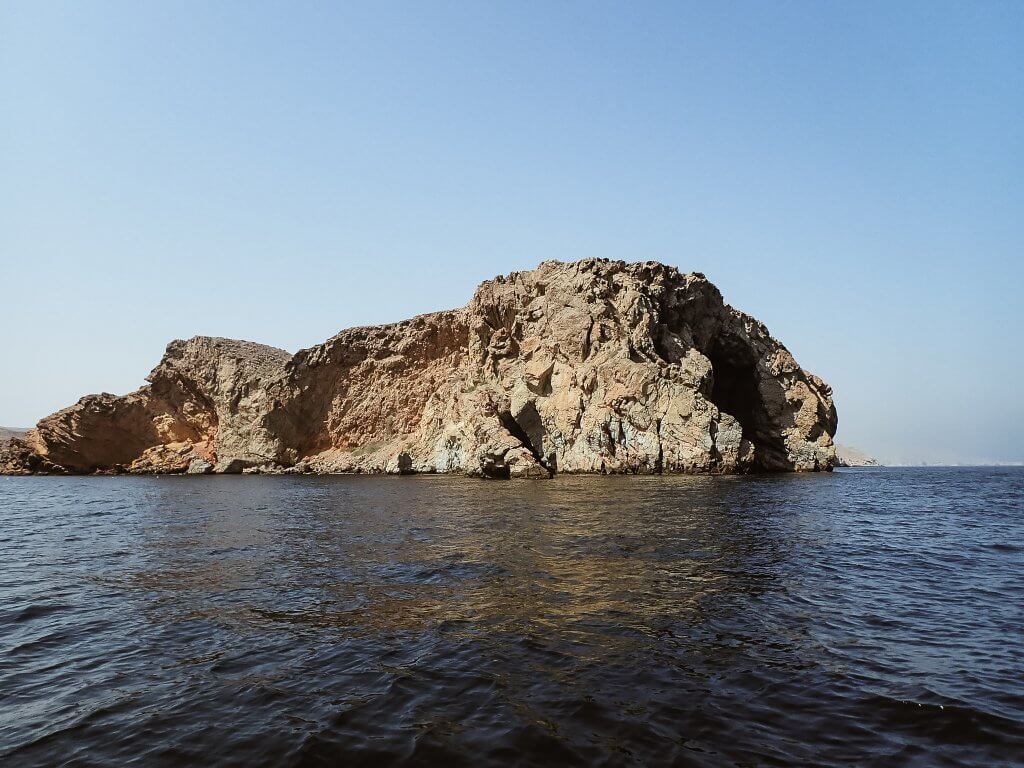
Then came my last day of diving in Oman. I was off-duty, and along for the ride with my camera at the ready. I asked my dive buddy if she would mind taking a quick tour through the sand at 30 meters; there was a fish I wanted to visit.
I tried to be speedy about searching the otherwise desolate, sandy bottom for the face peering upwards. I didn’t want my buddy to get frustrated that she was spending a rather costly dive staring at the unremarkable sand. Then again, I didn’t want to go so quickly that we overexerted ourselves and used up our air too quickly. There had to be balance.
I was just about to give up when I saw the outline of an odd-shaped creature popping up out of the sand in the distance. Bingo. Our approach scared him back down into his hidey-hole, but hovering over, we could still see his funny, gaping expression staring right back at us. The jawfish was one of the first interesting things I discovered in Oman, and that very same jawfish was the last underwater face I saw, telling me my mission had been a success. Or maybe that was the narcosis talking…
